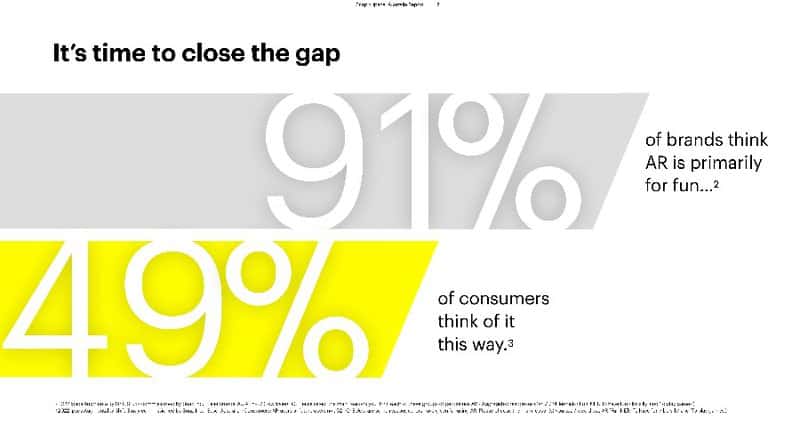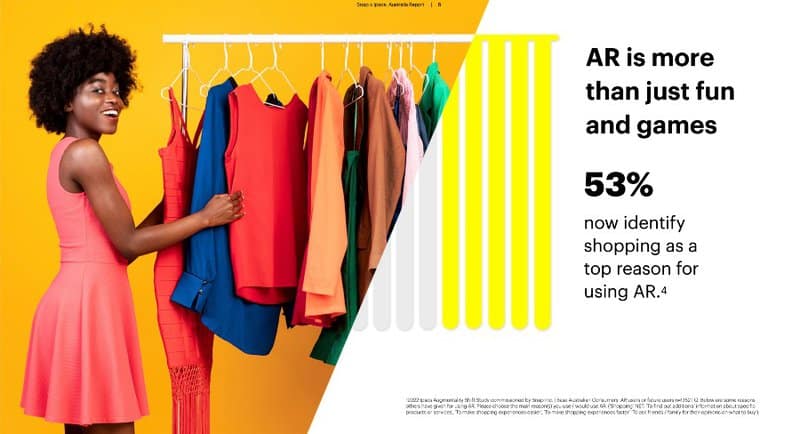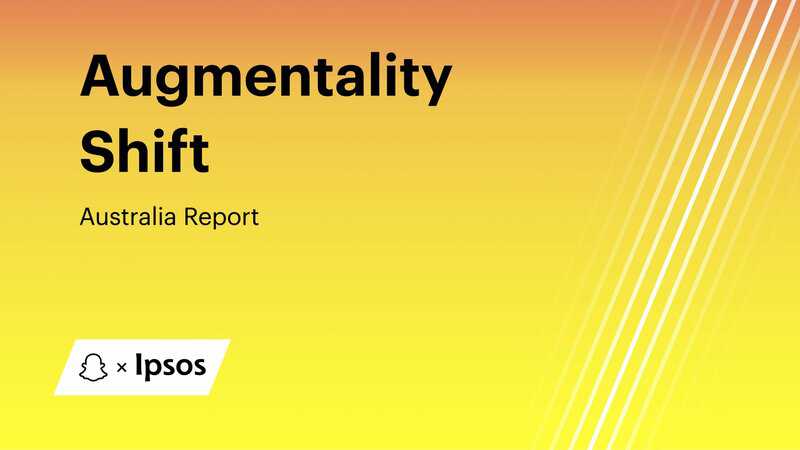Snap and Ipsos partnered on new research that demonstrates the use of AR technology is becoming more prominent among consumers and brands and that behaviours around AR usage are starting to shift.
As Augmented Reality (AR) continues to innovate and bring utility to people’s lives, the study, titled Augmentality Shift, on behalf of Snap, uncovers the untapped potential of AR for brands looking to connect with consumers through their shopping journey, demonstrating how critical AR is to delivering conversion.
The AR revolution has happened, and technology is now seen as a common tool for consumers to assist them in making purchasing decisions.
By 2025, it is predicted that nearly three-quarters of the global population will be using AR, including almost everyone who is active on social/communication apps.

In Australia, the research shows that AR is no longer perceived just as ‘fun’, but for real-world utility, with shopping being the #1 reason that Australian consumers use AR.
For decision-makers, brands and creatives, this demonstrates an enormous opportunity to provide engaging and immersive experiences which drive brand love and greater connection.
This new research outlines how Australian consumers view AR and where opportunities exist for brands to take advantage of.
The report from Snap and Ipsos found a disconnect between how brands and consumers define AR use:
• Brands over-estimate consumer desire to use AR for fun by 1.9x: Only half (49%) of consumers think of it this way, with consumers now most interested in shifting future usage towards utility.
• Shopping is the #1 reason consumers use AR, with 53% affirming that it makes retail experiences easier, better and faster overall: Three in five (60%) consumers agree that AR helps them shop in new and exciting ways.
• 74% of consumers believe AR has the potential to help the environment as: AR helps reduce returns and help people make more accurate choices.
Our research has also found that Australian brands that are already using AR in their campaigns have seen positive business results.
• 80% of brands that use AR filters, lenses or effects improved their brand awareness.
• 90% of brands that use AR claim AR helps them to improve their brand engagement and appeal to younger audiences.
• 78% of brands who use AR state it helps to drive sales, acquire new customers and drive performance metrics.
• 82% of brands agree AR allows products or events to feel more accessible.
• 68% of brands think that the number of returns a customer makes can be reduced by utilisation of AR in their marketing campaigns.

Haran Ramachandran, head of creative strategy, Snap ANZ: “AR usage on Snapchat is surging, with over 250 million Snapchatters engaging with AR every day on average.
“There is a rise in demand for AR experiences that bring greater utility ro consumers’ daily lives, and brands have an opportunity to capture consumers’ attention through these immersive brand experiences,” he said.
“While Snapchatters still love to use AR Lenses for entertainment and self expression, we’re excited to see more brands taking advantage of AR’s endless potential to provide true value for consumers and drive meaningful business results,” Ramachandran added.
Eduardo Mena, research director at Ipsos, said: “A powerful theme which emerged from our study is how brands and consumers just aren’t quite in the same place when it comes to AR.
“For many Australian consumers AR is a part of their daily lives, yet most brands still think they are predominantly using AR for fun. Shopping is the main reason consumers use AR, taking advantage of its potential to contextualise products, be more environmentally friendly, and more social.
“Our research also shows the growing expectations from consumers when it comes to AR, to help them to learn, or to navigate amongst others, and the possibilities are endless for brands,” Mena added.

